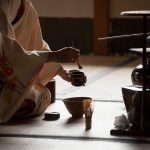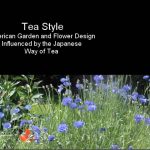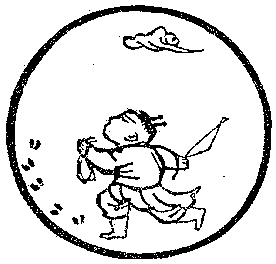Yesterday, as I was walking through my garden with a friend, she discovered this wonderful and mysterious Trillium – a precious, native orchid. It was hidden away and I had no idea it was in the garden. Did I plant this years ago and forget about it?
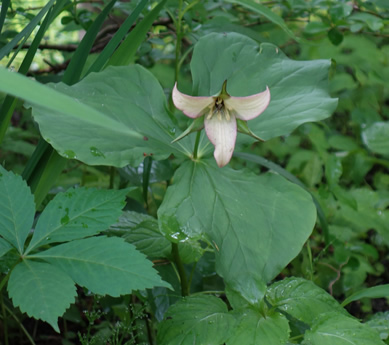
A Trillum is loved for its flower, which is amazing, but also admired for the three large leaves that dress it. It’s called a ‘Wake Robin’.
I was so thrilled to find it. It’s a perfect flower for Chabana, a flower to use in the tea room. I couldn’t resist and cut one flower.
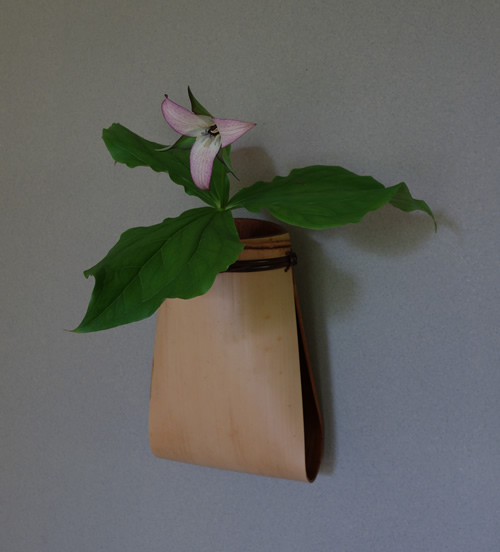
Trillium in a bamboo basket in the shape of an arrow quiver by Matsumoto Hafu – signed on the back.
How beautiful. But then I found out that one should not cut Trillium as they spread by seed. And they’re rare. Oh no. I had cut-killed this beautiful wild thing from my garden.
But last night seeing this wild orchid during zazen meditation in the tea house – I could see the whole perfection of the universe in it. No kidding. And you would have too. Satori isn’t just for the few. It’s for all of us at anytime.
Gratitude to all plants and teachers.
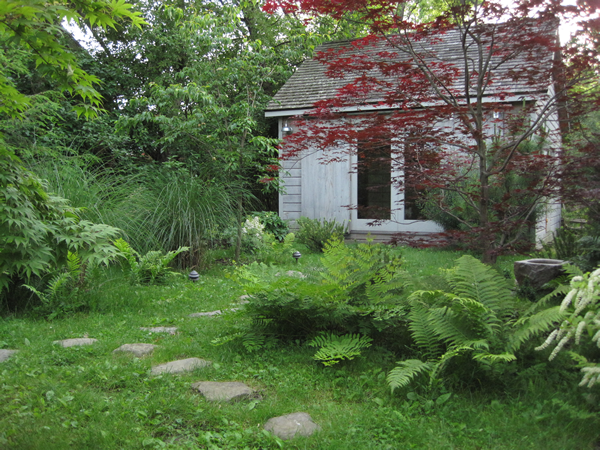
I first learned to garden when I lived at Green Gulch Zen Center in California. Green Gulch is a working organic farm that grows vegetables and flowers for market. I learned about Biodynamic farming, watched gardeners plant seeds in rows of dark rich earth, walked by steaming hot compost piles and weeded in the flower gardens.
Zen is known for its close relationship with the arts, in particular gardening, poetry, calligraphy and the tea ceremony. As part of my Zen practice I have been studying the Way of Tea for many years. This study includes flower arranging, garden design, architecture, literature, the connoisseurship of the fine and applied arts and cuisine. Kaiseki cuisine is a seven course meal served during a tea gathering and in 1997 I wrote a book about it called The World in a Bowl of Tea.
When I moved to my home in Tivoli, New York I continued my Tea and Zen practice and built a small tea house in my back yard. One important element in any Tea gathering is the garden and the path to the tea house, called a Roji. To learn more about this I went to Japan to study Japanese garden design at Kyoto University of Art and Design.
It was my first trip to Japan and I felt completely at home. At last I could walk through the gardens I had heard so much about. I wandered through ancient temples and drank in the atmosphere of the timeless spaces.
This is the story of how I built a Tea house in my backyard and how I created the gardens that surround it. I incorporate many of the ideas of the wild garden, the English cottage garden, the prairie garden all the while working within the rustic, elegant style of the Tea Ceremony.
excerpt – A Tea Garden in Tivoli






